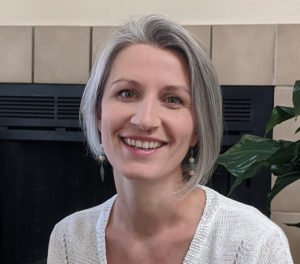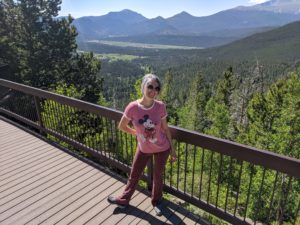Investigator Profile: Vira Kavets

Project: Beta-cells 1st Responders and Functional Paracrine Networks in Healthy and Diabetic Human Islets
NIH NIDDK Emerging Leaders Recipient
►Where are you from originally, and where did you go to school?
I am from Chernihiv – a northern city in Ukraine – that’s where I went to school. I then went to the Taras Shevchenko National University of Kyiv in the capital of Ukraine, Kyiv, where I got my Masters in Experimental Physics: Photonics. I got PhD in Applied Science: Physics from the University of Colorado in Colorado Springs, CO, USA.
►What is your current position?
Postdoctoral Research Fellow
►Why did you decide to become a researcher?
I fell in love with the duality of it: logical part + intuitive part. I enjoy building a theoretical or computational model and see whether it matches or predicts my experimental results (logic) + figuring out the best ways to perform an experiment in imaging or microscopy (art, intuition).
►What is the “Big Picture” of what you study?
The Big Picture of my study is that there may be an order to the diabetes onset: if I can figure out how some cell subpopulations affect the others – I can try and develop a therapy for diabetes prevention. The functional hierarchy and functional architecture in the organs is not a new concept – there are cells setting the patterns in heart and in the brain. So what if there are cells orchestrating patterns in the pancreas? And what if they are the ones being disrupted in diabetes first? If this is true, and if we can understand what makes these cells play their role – we can find a way to protect them, or alternatively engineer from the stem cells to replace those which were lost in disease.
►What is your favorite aspect of your research?
The part where I figure out a new way to see (visualize) the functional architecture of the living sample – like when I see that different cell types “light up” due to calcium influx at different times, and then from there this excitation propagates throughout the microorgan. Or like when I see that based on fluorescence lifetime I can differentiate alpha cells brom beta cells, without need for staining. Or when I see that based on the far-red backscattered light I can differentiate islet from the rest of the tissue. In a few words: it’s visualizing the organization of a living system.
► What do you hope to achieve with your research?
I hope to contribute to a new targeted therapy for diabetes prevention.
► What groups are you involved with?
Professional: American Diabetes Association, European Association for Study of Diabetes, Juvenile Diabetes Research Foundation. Personal: Green Peace, 4Ocean, Dumb Friends League (Humane Society) + plus I started and lead the Morning Yoga With Friends group where we practice yoga on zoom or in the park.
►When not in the lab what are your favorite hobbies/activities?
I climb rocks (best if it’s nice outside), dance, practice yoga, play with my cat, cook, hike with my husband and friends.
►Anything additional you would like to share with the group (comment: special honor/award, skill, hobby, etc)
My passion is travel and learning about different cultures.
|
|


